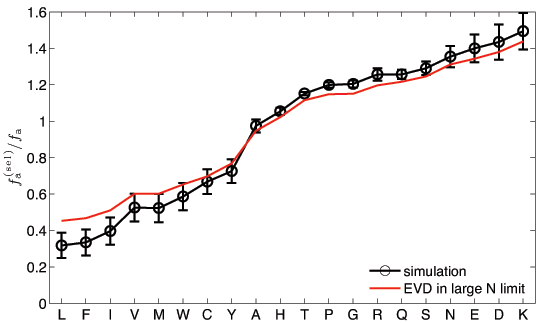Analysis
![]() The selection condition is equivalent to the choice of the Extreme Value:
The selection condition is equivalent to the choice of the Extreme Value:
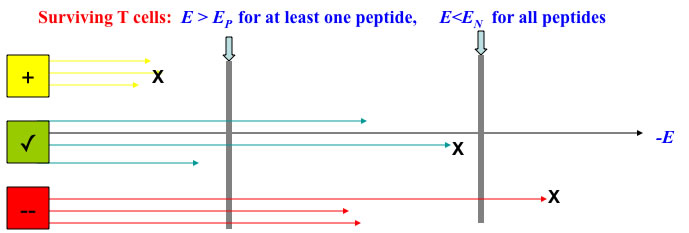
![]()

Probability distribution of the extremum of M objects:

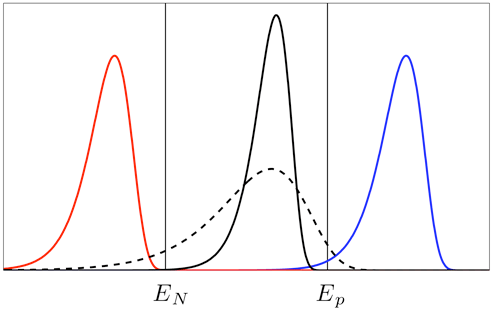
Characteristics of the Extreme Value Distribution
:
Binding energies of a particular TCR sequencs:
Extremal mean value:
~
,
where
and
are the mean and variance of interactions of the candidateTCR sequence.
Extremal standard deviation:
~
Note scaling in the large N limit;
(proteome)
Due to the shaprpness of the distibution in the large N limit, the seletion condition can be written as:
[
and
are the mean and variance of interactions of the candidate TCR sequence.]
![]() The above selection condition is reminiscent of the micro-canonical constraints in Statistical Physics.
The above selection condition is reminiscent of the micro-canonical constraints in Statistical Physics.
The "energy" involves interactions amongst the N amino-acids in the sequence
The "interaction" depends only on the sum of variances for the individual amino-acids
As such, in the large N limit, the probability to select a sequence can be written as a product
,
where
and
have to be obtained self-consistently from
and
.
Graphical solution for
![]()
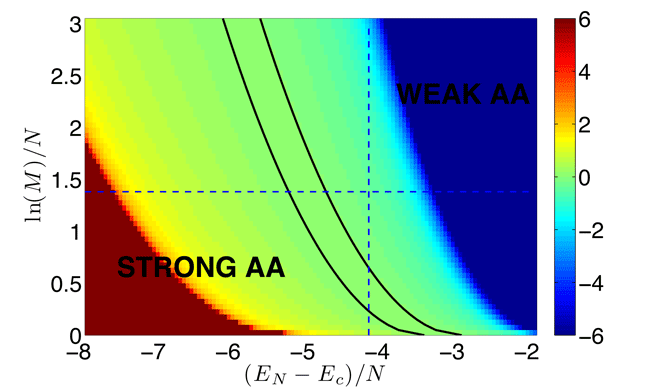
![]()
Because of the restriction to an energy interval, there is a range of parameters where
= 0.
![]() How well does this work for finite N? (N=5 and M=10.000)
How well does this work for finite N? (N=5 and M=10.000)
A. Kosmrlj, A.K. Chakraborty, M.K., & E. Shakhnovich, PRL 103, 068103 (2009)
![]() More elaborate variants of the above model can be studies (Hanrong Chen), such as
More elaborate variants of the above model can be studies (Hanrong Chen), such as
How does non-uniform usage of TCR sites, modify selection bias at different sites?
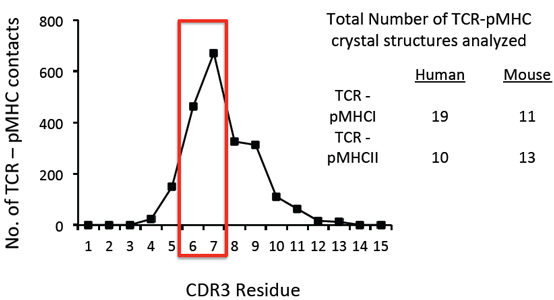
[B.D. Stadinski, ..., A.K. Chakraborty & E. Huseby, Nature Immunology (2006)]
Different sites could be in contact with the same amino-acid peptide. What are subsequent correlations between amino-acids at such sites?



